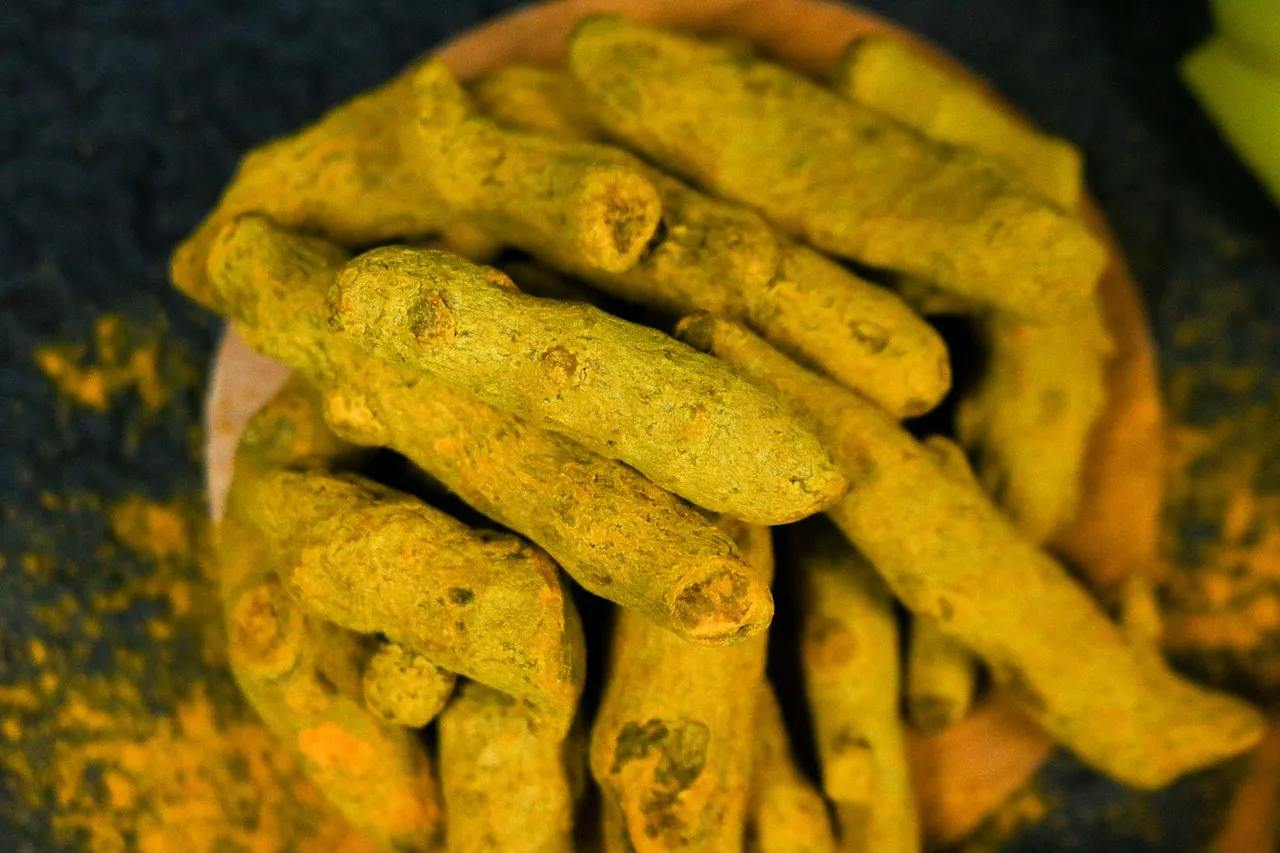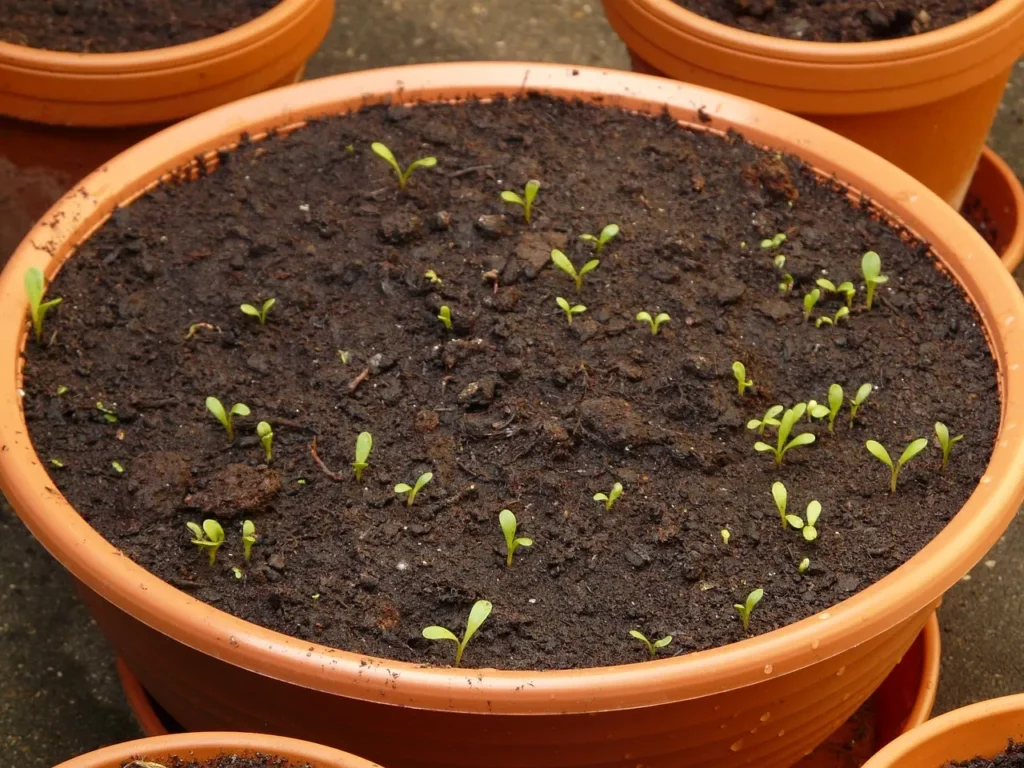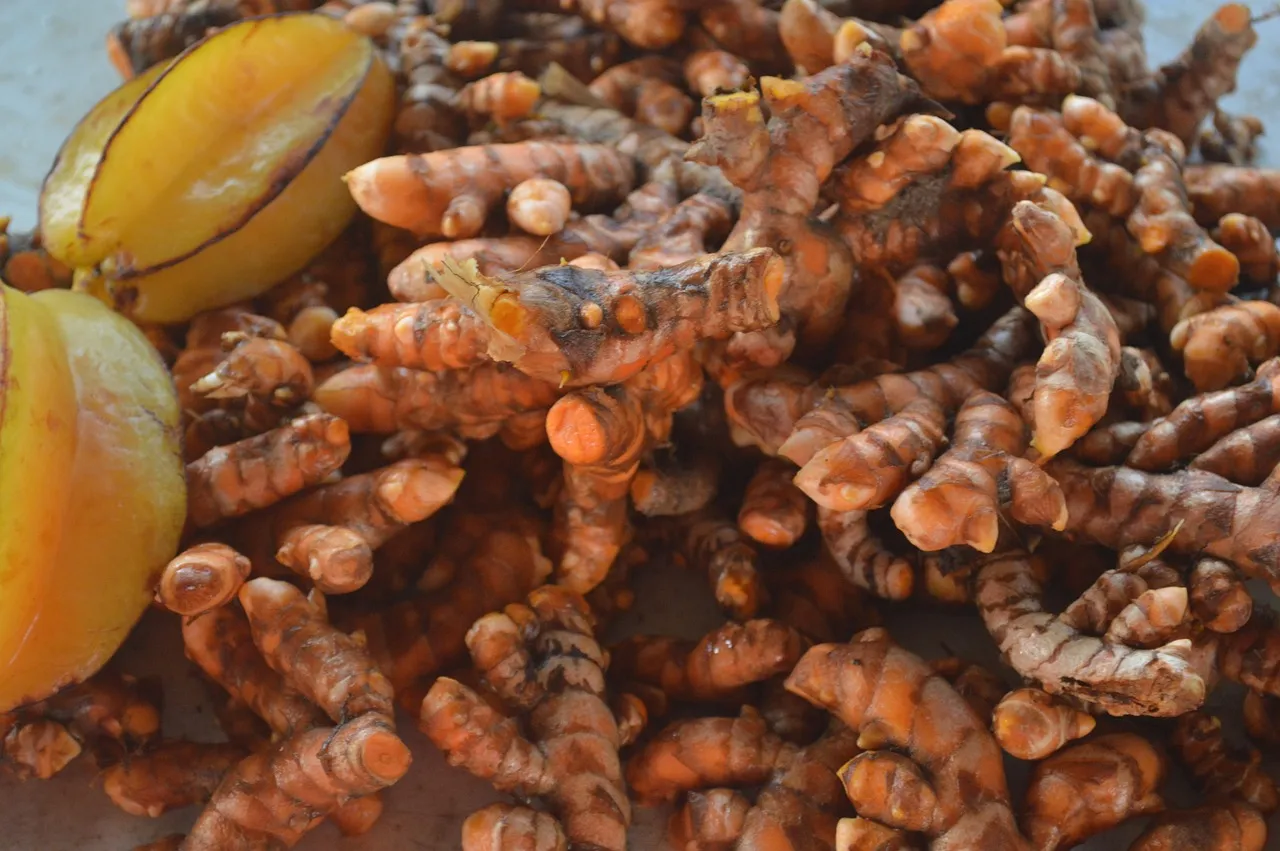In recent years, the global demand for organic products has seen a significant rise, and one of the shining stars in this movement is organic turmeric farming in India. Known for its vibrant yellow color and earthy flavor, turmeric has been a staple in Indian cuisine for centuries. However, it’s not just the culinary world that has taken notice; the health benefits of organic turmeric have become a focal point of research and discussion. In this blog, we will delve into the various facets of organic turmeric farming in India and explore how this practice not only benefits the environment but also contributes to the overall well-being of consumers.

The Rise of Organic Farming in India
India, often hailed as the birthplace of agriculture, carries within its soil a tapestry of ancient farming traditions that have woven themselves into the cultural and historical fabric of the subcontinent. The roots of agriculture in India run deep, reflecting not just a method of sustenance but a way of life, an intrinsic connection between the people and the land they cultivate.
For centuries, Indian farmers practiced a form of agriculture that was deeply intertwined with nature. Traditional farming methods, shaped by the wisdom of generations, were characterized by sustainable practices that maintained the delicate balance of the ecosystem. Crop rotation, mixed cropping, and the use of organic fertilizers were not just techniques but principles, embodying a holistic approach that ensured soil fertility and biodiversity.
The agrarian practices were harmonized with the cyclical rhythms of nature, with farmers attuned to the seasons and the land’s needs. This symbiotic relationship with the environment allowed for the coexistence of agriculture and nature, fostering a sustainable and resilient agricultural system.
However, the latter half of the 20th century witnessed a seismic shift with the introduction of the Green Revolution. While it ushered in an era of increased agricultural productivity, it did so at a cost. Synthetic fertilizers and pesticides became commonplace, and the once-nurtured balance between humans and the land began to tilt. The unintended consequences of this agricultural intensification included soil degradation, depletion of natural resources, and the presence of chemical residues in crops.
In response to these challenges, a collective consciousness emerged. Farmers and consumers alike started to question the sustainability of conventional farming practices and the impact they had on the environment and public health. This awakening gave rise to a movement, a return to the roots of agriculture, where the principles of traditional farming were re-embraced.
Organic farming became the cornerstone of this resurgence. It represented a shift back to the time-honored practices of the past, rejecting the overreliance on synthetic inputs and advocating for a more holistic and sustainable approach to agriculture. The movement gained momentum as people began to recognize the need for a paradigm shift, one that prioritized the health of the soil, the well-being of the farmers, and the purity of the produce.
The shift towards organic turmeric cultivation encapsulates this broader movement towards sustainability. Turmeric, a spice deeply ingrained in Indian culture for its culinary and medicinal uses, became a symbol of the return to conscientious farming practices. The surge in interest in organic turmeric was fueled by concerns about the presence of chemical residues in conventional turmeric, the degradation of soil quality, and the desire to preserve the inherent goodness of this golden spice.
In essence, the historical context of the rise of organic farming in India is a narrative of rediscovery. It is a journey back to the wisdom of the land, an acknowledgment that the sustainable practices of the past are not outdated but, in fact, timeless. The movement towards organic turmeric cultivation is not merely a trend but a conscious choice to embrace a more harmonious and sustainable relationship with the land—a return to the roots that have sustained India’s agriculture for centuries.
Organic Turmeric Farming Practices
Organic turmeric farming in India is a testament to the commitment of farmers to embrace natural and sustainable techniques, fostering an agricultural system that not only yields high-quality produce but also prioritizes the health of the environment and the consumers. This holistic approach stands in stark contrast to conventional farming methods that often rely on synthetic inputs and genetically modified organisms. Let’s delve into the intricacies of organic turmeric farming practices, exploring the various elements that contribute to its success.
Avoidance of Synthetic Fertilizers and Pesticides: In organic turmeric farming, the first and foremost distinction lies in the rejection of synthetic fertilizers and pesticides. Instead of relying on chemical interventions to enhance crop growth and combat pests, organic farmers turn to alternative, nature-friendly solutions. This avoids the potential negative impacts associated with chemical residues on both the turmeric plants and the surrounding ecosystem.
Non-Usage of Genetically Modified Organisms (GMOs): Organic turmeric farming staunchly adheres to the principle of steering clear of genetically modified organisms. This ensures that the genetic integrity of the turmeric plants is preserved, allowing them to evolve naturally and express their inherent qualities without the interference of genetic modifications. The absence of GMOs also aligns with the preference of consumers who seek natural and unaltered food sources.
Crop Rotation: Organic farmers practice crop rotation as a fundamental technique to maintain soil health and fertility. By alternating the cultivation of turmeric with different crops in a planned sequence, the nutrient balance in the soil is preserved. Crop rotation also helps in breaking the life cycles of pests and diseases specific to turmeric, reducing the reliance on chemical interventions and promoting a more resilient agricultural ecosystem.
Companion Planting: Companion planting is a strategic method employed in organic turmeric farming where compatible crops are planted in close proximity to enhance each other’s growth. Certain companion plants can repel pests, attract beneficial insects, or contribute to soil enrichment. For example, planting turmeric alongside nitrogen-fixing legumes can improve soil fertility by naturally increasing nitrogen levels.
Use of Organic Inputs: Organic farmers prioritize the use of natural and organic inputs to nourish the soil and turmeric plants. This includes the incorporation of compost, well-rotted manure, green manure, and other organic amendments. These inputs not only provide essential nutrients for plant growth but also contribute to the overall health of the soil, fostering a thriving microbial community that aids in nutrient cycling.

Integrated Pest Management (IPM): Instead of resorting to chemical pesticides, organic turmeric farming embraces Integrated Pest Management (IPM) strategies. This involves a combination of natural predators, trap crops, and cultural practices to control pests. By promoting biodiversity within and around the turmeric fields, organic farmers create an ecosystem where beneficial insects play a crucial role in maintaining a balance between pests and their natural predators.
Emphasis on Soil Health: Central to organic turmeric farming is a deep-seated emphasis on soil health. Farmers recognize that healthy soil is the foundation for robust plant growth and nutrient-rich produce. Practices such as minimal tillage, cover cropping, and the application of organic matter contribute to soil structure improvement, water retention, and the prevention of erosion.
Enhanced Nutritional Profile: The culmination of these organic farming practices results in turmeric with an enhanced nutritional profile. The absence of synthetic chemicals allows the turmeric plants to express their full genetic potential, leading to higher levels of bioactive compounds such as curcumin. This not only benefits the consumers who enjoy a more potent and pure spice but also aligns with the growing demand for nutrient-dense, organic produce in the market.
In essence, organic turmeric farming practices represent a harmonious blend of traditional wisdom and modern ecological understanding. By embracing natural processes, organic farmers contribute not only to the well-being of the land but also to the production of turmeric that encapsulates the true essence of health, sustainability, and purity.
Nutritional Powerhouse – Turmeric’s Key Component
Curcumin – Nature’s Healing Gift:
Turmeric, often referred to as the “golden spice,” owes its vibrant hue and potent health benefits to the presence of curcumin, a bioactive compound with remarkable therapeutic properties. Within the context of organic turmeric farming, curcumin emerges as nature’s healing gift, playing a pivotal role in promoting well-being.
Curcumin and Its Health Benefits:

Curcumin, the active ingredient in turmeric, has garnered attention from the scientific and medical communities due to its multifaceted health benefits. Organic turmeric farming, by eschewing synthetic chemicals, plays a crucial role in preserving and even enhancing the curcumin content in turmeric, ensuring that consumers can harness its full potential.
Anti-Inflammatory Properties: One of the most widely recognized attributes of curcumin is its potent anti-inflammatory effects. Chronic inflammation is implicated in the development of numerous diseases, including cardiovascular conditions, autoimmune disorders, and certain cancers. Curcumin acts as a natural anti-inflammatory agent, modulating various molecular targets to help alleviate inflammation and reduce the risk of chronic diseases.
Powerful Antioxidant Activity: Curcumin is a robust antioxidant, capable of neutralizing harmful free radicals in the body. Free radicals, byproducts of metabolic processes and environmental exposures, can cause oxidative stress, contributing to cellular damage and aging. The antioxidant properties of curcumin help protect cells from oxidative stress, supporting overall cellular health and potentially reducing the risk of age-related diseases.
Potential Role in Chronic Disease Management: Numerous studies have explored the potential of curcumin in preventing and managing chronic diseases. From its ability to enhance cardiovascular health by improving cholesterol levels and reducing blood pressure to its role in supporting brain health and potentially delaying neurodegenerative diseases, curcumin’s versatility makes it a promising candidate for holistic health promotion.
Anti-Cancer Properties: Some research suggests that curcumin may have anti-cancer properties, inhibiting the growth and spread of cancer cells. While further studies are needed to fully understand the mechanisms at play, the anti-inflammatory and antioxidant nature of curcumin makes it an intriguing subject in the field of cancer prevention and treatment.
Joint Health and Arthritis Management: The anti-inflammatory properties of curcumin extend to joint health, making it a natural remedy for conditions such as arthritis. Individuals suffering from inflammatory joint disorders may find relief in the regular consumption of curcumin, potentially reducing pain and improving overall joint function.
Gastrointestinal Health: Curcumin has been studied for its potential benefits in maintaining gastrointestinal health. It may help alleviate symptoms of digestive disorders, such as irritable bowel syndrome (IBS) and inflammatory bowel diseases (IBD), by modulating inflammation and promoting gut integrity.
Organic Turmeric’s Role in Preserving Curcumin:
The curcumin content in turmeric is inherently influenced by the farming practices employed. Organic turmeric farming ensures that the curcumin content remains uncompromised, as synthetic chemicals are eschewed. This allows the turmeric plant to express its natural genetic potential, leading to a higher concentration of curcumin in the harvested spice.
The absence of chemical residues and the focus on sustainable agricultural practices in organic turmeric farming contributes to the purity and potency of curcumin. Consumers seeking to harness the full health benefits of curcumin can rely on organic turmeric as a source of this nature-derived healing compound.
Environmental Impact of Organic Turmeric Farming
Biodiversity Conservation
Conventional farming often involves the use of chemical inputs that can harm the surrounding ecosystem. In contrast, organic turmeric farming promotes biodiversity by avoiding synthetic pesticides and fertilizers. This approach fosters a healthier environment for both flora and fauna, contributing to the overall ecological balance.
Soil Health and Sustainability
Chemical-intensive farming practices can lead to soil degradation and loss of fertility over time. Organic turmeric farming prioritizes soil health through practices such as composting, cover cropping, and crop rotation. This not only maintains the productivity of the land but also ensures its long-term sustainability.

Organic Turmeric Farming and Soil Health:
Organic turmeric farming takes a different approach, prioritizing soil health as a cornerstone of sustainable agriculture. Several practices are employed to ensure that the soil remains vibrant, nutrient-rich, and resilient.
Composting: Composting is a central practice in organic turmeric farming that enriches the soil with organic matter. By combining kitchen scraps, plant materials, and other organic waste, farmers create nutrient-dense compost that serves as a natural fertilizer. This enhances soil structure, increases water retention, and promotes the growth of beneficial microorganisms. Composting contributes to a thriving soil ecosystem, fostering a dynamic environment for plant roots and soil-dwelling organisms.
Cover Cropping: Cover cropping involves planting specific crops during the off-season or alongside the main turmeric crop. These cover crops serve multiple purposes. They prevent soil erosion, enhance water retention, suppress weeds, and contribute organic matter when incorporated into the soil. Leguminous cover crops, in particular, play a vital role by fixing nitrogen from the atmosphere, enriching the soil with this essential nutrient.
Crop Rotation: Crop rotation is a strategic practice involving alternating the cultivation of different crops on the same land. In the context of organic turmeric farming, crop rotation helps break pest and disease cycles specific to turmeric. Different crops have unique nutrient needs, preventing the depletion of specific elements in the soil. This rotational approach enhances soil fertility, reduces the risk of soil-borne diseases, and promotes a more balanced and sustainable agroecosystem.
Benefits of Soil Health Practices in Organic Turmeric Farming:
Maintaining Soil Fertility: The incorporation of organic matter through composting and cover cropping ensures a steady supply of nutrients essential for turmeric growth. This maintains the fertility of the soil, allowing turmeric plants to access the nutrients they need for robust development.
Preventing Soil Erosion: Cover cropping serves as a natural shield against soil erosion, particularly during periods when the main turmeric crop is not actively growing. This protects the topsoil, preventing nutrient loss and maintaining soil structure.
Enhancing Water Retention: The improved soil structure resulting from organic practices enhances water retention. This is crucial, especially in regions with variable rainfall patterns, as it ensures that the soil remains adequately moist, promoting optimal turmeric growth.
Preserving Microbial Diversity: Chemical-free practices in organic turmeric farming nurture a diverse microbial community in the soil. Beneficial microorganisms contribute to nutrient cycling, disease suppression, and overall soil resilience.
Ensuring Long-Term Sustainability: By prioritizing soil health, organic turmeric farming takes a proactive stance toward long-term sustainability. The practices employed not only address immediate concerns but also contribute to the resilience and viability of the land for future generations.
Organic Turmeric Farming in Indian Communities
Empowering Local Farmers
The shift towards organic turmeric farming has empowered local farmers, providing them with a sustainable source of income. By adopting environmentally friendly practices, these farmers contribute to the global organic movement while preserving traditional agricultural knowledge.
Community Health Initiatives
Beyond economic benefits, organic turmeric farming has positive implications for community health. The absence of harmful residues in organic turmeric ensures that consumers can enjoy the spice without the risk of ingesting harmful chemicals. This, in turn, contributes to the overall health and well-being of the community.
Cultivation Hotspots in India
Turmeric Belt of India
While turmeric is cultivated in various parts of India, certain regions are renowned for their organic turmeric production. The southern states of Andhra Pradesh, Karnataka, Tamil Nadu, and Kerala form the core of the “Turmeric Belt,” where favorable climatic conditions and rich soil contribute to high-quality organic turmeric crops.

Organic Turmeric in the Western Ghats
The Western Ghats, a UNESCO World Heritage Site, is another hotspot for organic turmeric farming. The lush greenery and diverse ecosystems of this mountain range provide an ideal setting for cultivating turmeric using organic methods. Farmers in this region benefit from the unique biodiversity, contributing to the distinct flavors and qualities of the turmeric grown here.
Challenges and Future Prospects
Challenges in Organic Turmeric Farming
While the benefits of organic turmeric farming are evident, there are challenges that farmers face in transitioning from conventional to organic practices. These may include initial investment costs, limited access to organic markets, and the need for education and training. Addressing these challenges is crucial for the continued growth of organic turmeric farming in India.
Future Prospects and Global Impact
Despite the challenges, the prospects for organic turmeric farming in India look promising. As global consumers increasingly prioritize health and sustainability, the demand for organic turmeric is expected to rise. This not only benefits Indian farmers but also contributes to the global movement towards a more sustainable and healthy food system.
Conclusion:
Organic turmeric farming in India is more than just a farming practice; it’s a holistic approach to agriculture that prioritizes health, sustainability, and community well-being. From the rich history of Indian agriculture to the empowerment of local communities and the global impact on consumer health, the journey of organic turmeric is a fascinating exploration of the interconnectedness of food, health, and the environment. As we savor the golden spice in our curries and teas, let us also appreciate the farmers who, through organic practices, cultivate a healthier future for us and the planet.
#OrganicTurmeric #WellnessElixir

